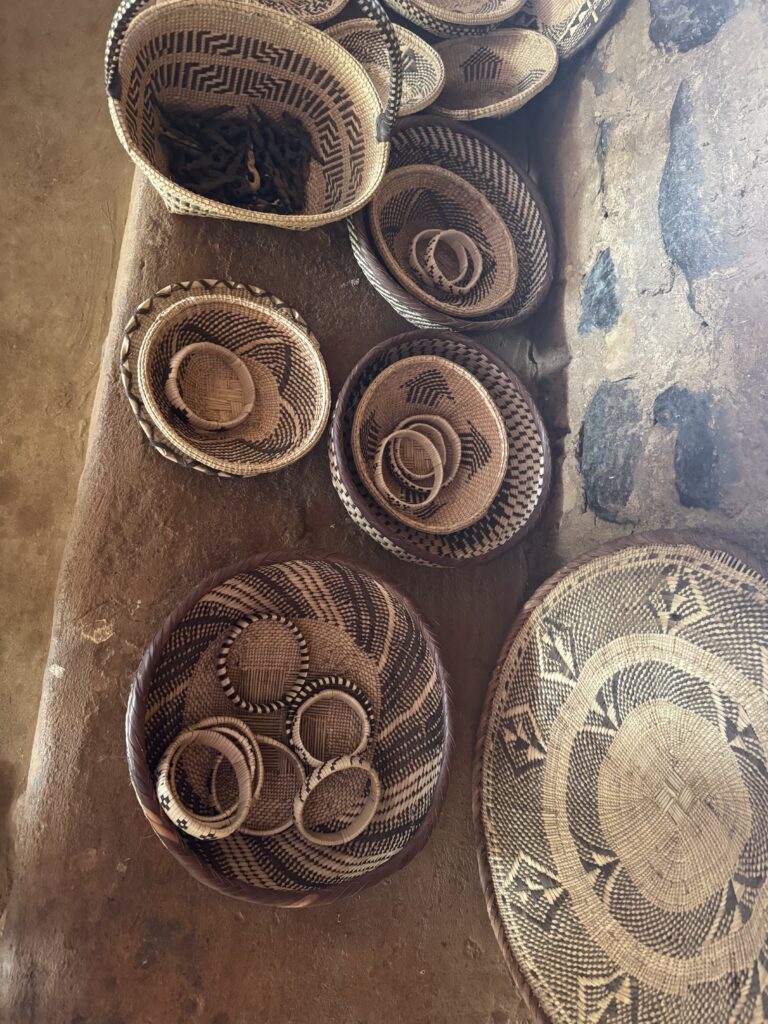
My journey to Zimbabwe took me far beyond wildlife safaris and scenic landscapes. It led me deep into the heart of a village where leadership, creativity, and community are woven into daily life. This is where I had the incredible privilege of meeting a local chief whose presence alone left a lasting impact.
A Walk Through the Village
Before stepping inside the barn where I’d meet the chief, I was greeted by the everyday rhythm of village life. Chickens darted across the dusty path. Turkeys strutted like royalty. Goats chewed lazily on bits of dry grass, eyeing me with mild curiosity.
I was there to observe and to learn. It felt more like being welcomed into a world where nature, people, and purpose exist in sync.
NOTE: Some of the amazing excursions and experiences featured in this post are available for purchase through our trusted partners at Viator and GetYourGuide.
Meeting the Chief
The chief met me with quiet strength and calm—his presence grounded, spiritual, and wise. In Zimbabwe, a chief isn’t a ceremonial figure. Leaders are chosen through ancestral lines. The chief is a cultural guardian and a spiritual guide. He is the one responsible for making decisions that affect the land and people under his care.
As we spoke, I felt how deeply connected he was to the land—not just as soil, but as something sacred. His leadership wasn’t about power; it was about responsibility, tradition, and deep respect for the balance between people and nature.
Inside the Barn
When I stepped inside the barn, I was blown away—not by opulence, but by resourcefulness. This wasn’t just a gathering space—it was a living museum of ingenuity. Tools, art, jewelry, musical instruments—everything was made from discarded materials. Materials, including scrap metal, old cans, bottle caps, broken glass, wire, and wood parts.
I saw a guitar made from an oil can. Necklaces created from magazine paper and colored glass. Cooking tools that once were rusted metal scraps. It was beautiful, practical, and deeply symbolic of how this community views nothing as waste—and everything as potential.
How Land Is Given
One of the most powerful things I learned was how land is allocated in rural Zimbabwe. Here, land isn’t something to be bought or sold. It’s a communal gift.
When someone wants to live or farm in the area, they speak with the village head. This individual brings the request to the chief. If granted, they’re given the right to use the land for life—and to pass it down to their children. But it can’t be sold. Land remains part of the community.
It’s not about ownership. It’s about stewardship. It’s a relationship with the earth, one rooted in tradition and trust.
Lessons I Took With Me
I went to Zimbabwe to explore. I left having been deeply moved. The chief had such a spiritual presence. The village’s creativity was inspiring. The seamless relationship between people and nature reminded me of what true leadership and sustainability might look like.
Leadership doesn’t always wear a suit or stand at a podium. Sometimes, it stands barefoot in a barn, surrounded by goats and handmade treasures. And sometimes, land isn’t something you own—it’s something you honor.
Plan your own trip
Some of the amazing excursions and experiences featured in this post are available for purchase through our trusted partners at Viator and GetYourGuide.
